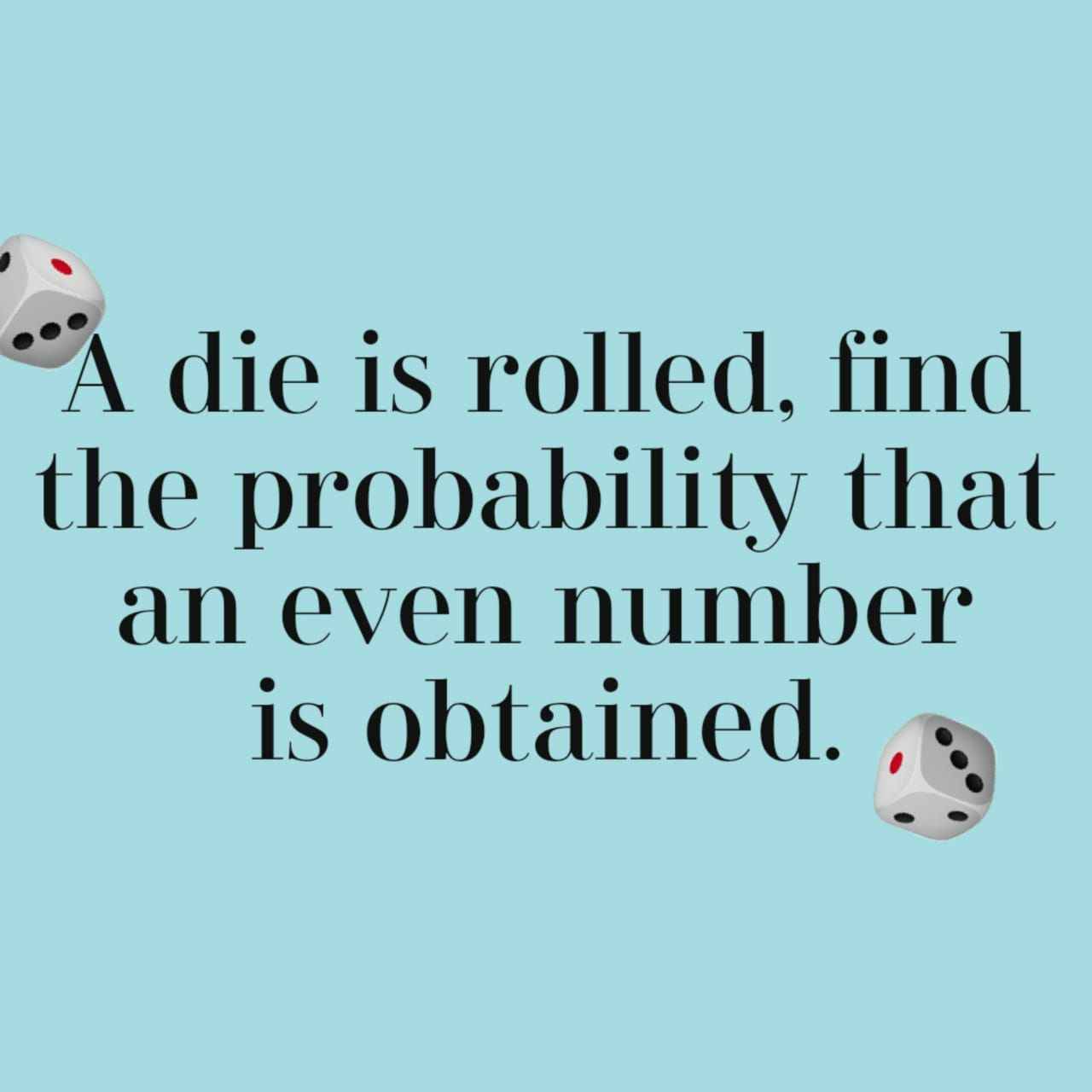Have you ever played with dice? Well, of course, you have! You spent a great deal of your time in your childhood playing dice. You must have played “Shut the box” in your childhood. The “Liar’s Dice” is also a fun game. And oh, how can you forget the famous “Bunco”?
Try these fun math riddles based on dice!
Math Riddle 1:
Two coins are tossed, finding the probability that two heads are obtained. Note: Each coin has two possible outcomes H (heads) and T (Tails).

Come on, grab your dice!
Math Riddle 2:
A die is rolled and a coin is tossed, find the probability that the die shows an odd number and the coin shows a head.

Roll your dice!
Math Riddle 3:
A die is rolled, find the probability that an even number is obtained.

Where have you kept your favorite dice?
ANSWERS:
Math Riddle 1:
Two coins are tossed, finding the probability that two heads are obtained. Note: Each coin has two possible outcomes H (heads) and T (Tails).
Answer:
The sample space S is given by.
S = {(H,T),(H,H),(T,H),(T,T)}
Let E be the event "two heads are obtained".
E = {(H,H)}
We use the formula of classical probability.
P(E) = n(E) / n(S) = 1 / 4
Math Riddle 2:
A die is rolled and a coin is tossed, find the probability that the die shows an odd number and the coin shows a head.
Answer:
Let H be the head and T be the tail of the coin. The sample space S of the experiment described in question 5 is as follows
S = { (1,H),(2,H),(3,H),(4,H),(5,H),(6,H)
(1,T),(2,T),(3,T),(4,T),(5,T),(6,T)}
Let E be the event "the die shows an odd number and the coin shows a head". Event E may be described as follows
E={(1,H),(3,H),(5,H)}
The probability P(E) is given by
P(E) = n(E) / n(S) = 3 / 12 = 1 / 4
Math Riddle 3:
A die is rolled, find the probability that an even number is obtained.
Answer:
Let us first write the sample space S of the experiment.
S = {1,2,3,4,5,6}
Let E be the event "an even number is obtained" and write it down.
E = {2,4,6}
We now use the formula of classical probability.
P(E) = n(E) / n(S) = 3 / 6 = 1 / 2
Comments
All Comments (0)
Join the conversation